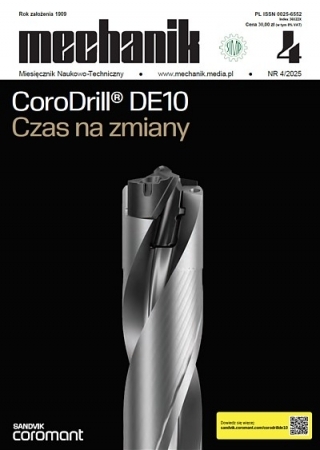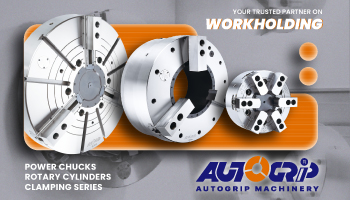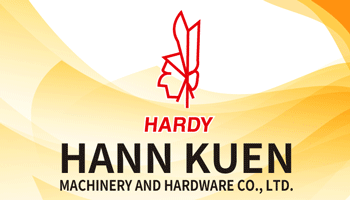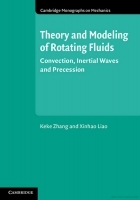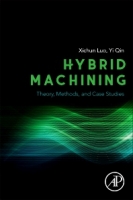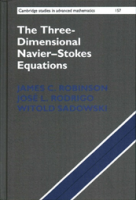Praktyczne aspekty doboru modelu numerycznej kompensacji błędów geometrycznych obrabiarek *
Selection of numerical compensation model of geometric errors of machine tools
Author: Paweł Majda, Joanna Jastrzębska
Mechanik nr 11/2018 - Metrologia techniczna
STRESZCZENIE: Po wielu latach intensywnej pracy międzynarodowi eksperci z ISO TC 39 opublikowali raport techniczny ISO TR 16907 “Machine tools – numerical compensation of geometric errors”. Dokument ten definiuje terminologię oraz przedstawia korzyści i ograniczenia dotyczące numerycznej kompensacji błędów obrabiarek i maszyn pomiarowych. Producenci i użytkownicy maszyn uzyskali więc ważne informacje na temat zastosowania kompensacji numerycznej. W kontekście zdefiniowanych w ISO TR 16907 typów kompensacji w tym artykule przedstawiono zasady doboru modeli błędów przestrzennego pozycjonowania dla trójosiowych obrabiarek skrawających. Omówiono też zasady redukcji tych modeli ze względu na zadania funkcjonalne stawiane obrabiarkom. Zaprezentowano tablicę modeli zredukowanych dla trójosiowych obrabiarek. Determinuje ona stopień szczegółowości modelu i programu badań doświadczalnych, jakie należy przeprowadzić w celu wyznaczenia przestrzennego rozkładu błędu pozycjonowania.
SŁOWA KLUCZOWE: numeryczna kompensacja, błąd przestrzennego pozycjonowania
ABSTRACT: After many years of intensive work, experts from ISO TC 39 have published the technical report ISO TR 16907 “Machine tools – numerical compensation of geometric errors”. This document defines the terminology, presents advantages and limitations of numerical compensation of machine tool and measuring machine. This gives machine manufacturers and users important information on the application of numerical compensation. In the context of the compensation types defined in ISO TR 16907, presented principles of selecting volumetric error models for three-axis machine tools. The principles of reducing these models due to the functional tasks of machine tools were also presented. The final result is a table of reduced models for three-axis machine tools. It determines the degree of the model and the experimental test program, which should be done to determine volumetric error.
KEYWORDS: numerical compensation, volumetric error
BIBLIOGRAFIA / BIBLIOGRAPHY:
- ISO 10791-1:2015 Test conditions for machining centres – Part 1. Geometric tests for machines with horizontal spindle (horizontal Z-axis).
- ISO 10791-2:2001 Test conditions for machining centres – Part 2. Geometric tests for machines with vertical spindle or universal heads with vertical primary rotary axis (vertical Z-axis).
- ISO 841:2001 Industrial automation systems and intergration. Numerical control of machines. Coordinate system and motion nomenclature.
- ISO TR-16907:2015 Machine tools – numerical compensation of geometric errors.
- Okafor A.C., Ertekin Y.M. “Derivation of machine tool error models and error compensation procedure for three axes vertical machining center using rigid body kinematics”. International Journal of Machine Tools & Manufacture. 40 (2000): s. 1199–1213.
- Schwenke H., Knapp W., Haitjema H., Weckenmann A., Schmitt R., Delbressine F. “Geometric error measurement and compensation of machines – an update”. CIRP Annals – Manufacturing Technology. 57, 2 (2008): s. 660–675.
- Smith G.T. “Machine Tool Metrology. An Industrial Handbook”. Springer, ISBN 978-3-319-25109-7, 2016.
- Szwengier G. „Modelowanie i obliczenia projektowe układów prowadnicowych obrabiarek”. Prace naukowe Politechniki Szczecińskiej nr 512. Szczecin: Wydawnictwo Uczelniane Politechniki Szczecińskiej, 1994.
- Vragov J.D. „Analiz komponovok metallorežuščich stankov. Osnovy komponetiki”. Moskva: Mašinostroenie, 1978.
DOI: https://doi.org/10.17814/mechanik.2018.11.175
* Artykuł recenzowany




